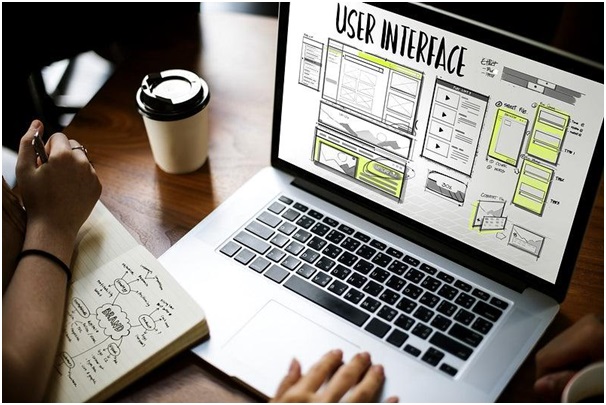Is your company poised to conquer the online cannabis market? An effective website is the cornerstone of success, but you may feel befuddled by the jargon used by designers and developers. Here is your guide to the basic web anatomy in plain English. The site that will power your sales will have:

1. Header
This is the top part of the site with the logo. It travels with the visitors as they click around your site. The header may or may not include the navigation menu (see below).
2. Footer
Like the header, the footer is constant from page to page. The difference is its location — at the bottom. Commonly, this region contains contact details, social media icons, privacy policy, terms of use, and links to other sections of the website.
3. Website Content
This broad term encompasses all the information your visitors see: text, images, videos, audio files, etc. “Body copy” or “web copy” is written text. Including popular and relevant keywords is one of the ways to apply MjSeo.Agency. Which pushes them higher in search results.
4. Featured Image
The purpose of this image at the top of the page is to draw attention and set the tone for the overall design. Typically, it occupies the entire page width and includes headlines. One of the useful tips on improving your website is to include calls to action, too (e.g., “click here” or “subscribe today”).
5. Navigation Bar (Main Menu)
As the term suggests, this element helps you get around the site and find what you are looking for. It is usually found at the top or below the header. On mobile devices, the space is limited, so navigation looks like three parallel lines (aka a “hamburger”). Tapping on them reveals a horizontal or vertical toggle menu.
A website with tons of pages may have a “mega menu”. When you hover over a link in the main navigation, this reveals a drop-down menu with categories and subcategories.
6. Slider
This element can be placed anywhere on a site, but it is typically found on home pages. It displays pictures in a slideshow manner, so they move from left to right or vice versa. Sliders are becoming less common as they slow down page load and rarely bring enough value to justify this.
7. Sidebar
The sidebar is the vertical column adjacent to your content. It may contain ads, links, a search box, or a call to action. In recent years, sidebars have been losing popularity, and some designers prefer the content to occupy the full width of the page. This makes sense on websites where the sidebar would hinder the user experience and conversion rate.
8. Landing Page
These are the pages linked to your promotional material anywhere on the web. When users click on it, they are redirected to the destination page with the product or service advertised. For cannabis businesses, ads are out of the question, but you can drive traffic from other sources.
9. Front Page (Home Page)
This is the starting page of your site that is usually connected to the logo in the header. This allows your visitors to return to the beginning if they get lost.

10. Blog
This can be a section of your site or a standalone website. Blogs have a distinct structure, as posts go in chronological order like diary entries. In comparison, web pages are linked together like a collection, instead of being presented sequentially. Unlike blog posts, they have a more formal tone and do not have a comment section. Your web pages describe your products or services, while blog posts provide related information in a more casual tone.
11. Call To Action (aka CTA)
This is an explicit request asking users to complete a specific action, such as purchasing your product, subscribing to your newsletter, calling you, etc. CTAs are crucial for conversion — turning visitors into customers. They may take the form of buttons, pop-ups, slide-ins, text links, etc. CTAs must be clear, but not aggressive.
12. Card Design (aka Tile Design or Grid-Based Design)
By organizing data into a grid, you can make your website more visually appealing, readable, and mobile-friendly. This layout was inspired by websites like Pinterest. You can showcase the benefits of your products or services on a single sales page.
Additional Terms Worth Knowing
Domain Name (aka URL)
When somebody asks you how to find your website, you give them its domain name — the part that comes after “www.” It is linked to your IP address.
Google Analytics
This free service collects statistics about your site, such as the number of visitors, the most popular pages, time spent on every page, etc. You can see what works and what doesn’t. To access this data, you need to install a tracking script.
Hosting
To build a house, you need a piece of land. To build a website, you need space on a web server that will host it.
Mobile Responsive
A mobile-friendly website provides a pleasant user experience on the screens of smartphones and tablets. This requires larger fonts, a different layout, and optimized navigation. The content must be readable without pinching or zooming.
SEO
Search engine optimization is a broad field including different methods of promoting your site in organic search. The goal is to rise as high as possible. Search engines like Google consider a spectrum of factors to rank sites. Generally, it boils down to high-quality content that brings value to the reader and is properly formatted. You also need backlinks — references to your site from trusted sources.
SSL
Secure Socket Layer refers to a certificate that encrypts data exchange between your server and the users’ browsers. This makes their connection secure and protects sensitive information. Websites with an SSL certificate have a green padlock sign in the address bar and HTTPS instead of HTTP (the secure version of the transfer protocol).






